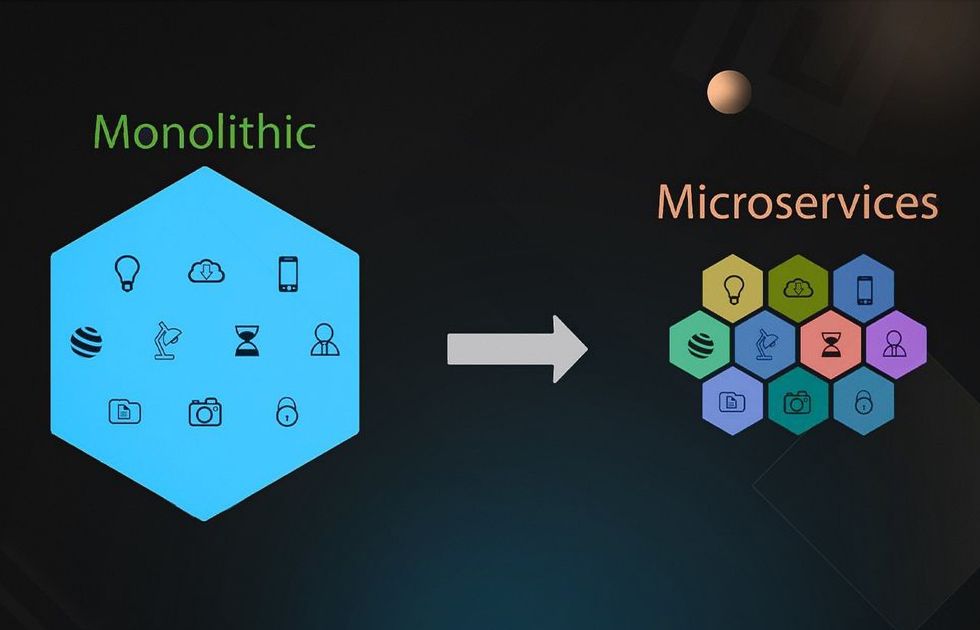
Key Takeaways
- With microservices, an application comprises small, independent, and loosely coupled services that work together.
- Microservice architecture enables enhanced scalability, agility, productivity, cost-efficiency, and fault tolerance.
- Convert monolith to microservices when your application faces scalability, rapid feature development, or fault isolation challenges.
Migrating from monolith to microservices is less costly and risky than redeveloping an entire system from scratch.
Monolithic systems can be hard to scale, tricky to update, and vulnerable to failures—since one issue can affect the whole application. That’s why 74% of companies consider moving to more modern, flexible architectures.
However, a successful migration requires in-depth infrastructure assessment, decomposition of your monolith architecture, software refactoring, and thorough testing. Your teams should also understand the specificity of distributed computing and continuous deployment to take full advantage of the architecture. Otherwise, you’ll face lots of monolithic to microservices challenges. And this is where Acropolium can assist and guide through the ins and outs of complex system upgrades.
So, what are the advantages of a microservices architecture, should you convert to it, and how do you proceed with the migration? This article describes how to convert monolith to microservices efficiently and bug-free.
Monolith Architecture and Microservices
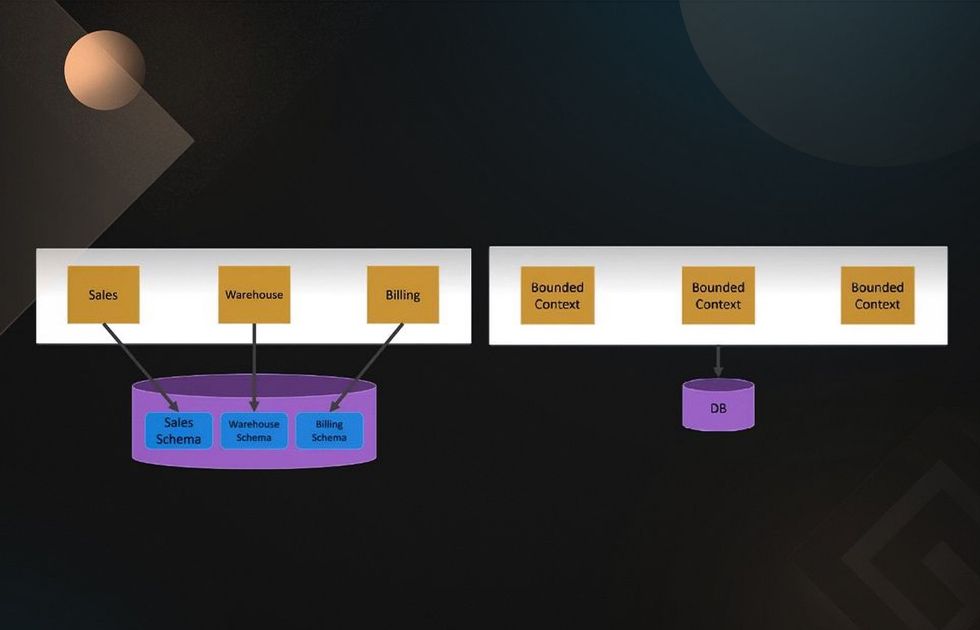
Let’s lay down the key concepts:
A monolith architecture is an application with a single code repository for software modules, business logic, and data access. All services are deployed and managed in one place.
Microservice architecture distributes systems as independent components with specific functions, computing resources, and databases. Each piece can be deployed and upgraded in isolation, using application programming interfaces (APIs) to exchange data.
Why Should You Migrate to Microservices?
The cloud microservices market is predicted to grow from $2 billion in 2025 to $5.61 billion by 2030, with an average CAGR of 22.88%. It can be attributed to the increasing need for low-cost and secure IT operations and the acceptance of containers and DevOps tools.
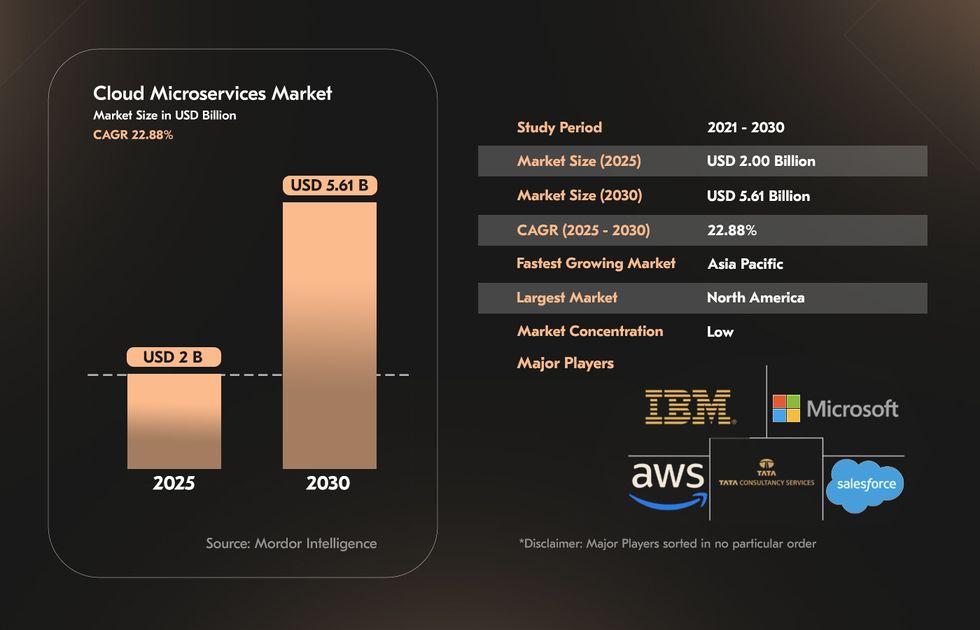
But why move from monolith to microservices? If certain parts of your system are hard to scale, deployments are taking too long, or it’s difficult to roll out new features or technologies, these are clear signals that migration might be needed.
At the same time, migration often supports key business goals like reducing time-to-market, improving customer experience, and staying competitive by adopting new technologies faster. Microservices let smaller, cross-functional teams work independently on specific services, boosting productivity and enabling quicker, more reliable releases.
In fact, this transition offers more excellent business and technical benefits.
Business Flexibility
Microservices architecture emphasizes bounded context between its independent components, making your system easily modifiable. Adding, removing, and upgrading features based on your business needs takes much less effort. So, it’s easier to keep systems relevant and competitive.
Faster Deployment
Microservices code is more understandable since it’s restricted to a single data repository. Your teams will get the dependencies and know what to expect when modifying the codebase. It makes testing more consistent and coherent, saving you time and money on upgrading the system.
Productive Environment
Defined boundaries and minimal dependencies allow teams to implement, scale, and deploy multiple microservices simultaneously. It also implies your developers have more autonomy. For example, they can choose programming languages, frameworks, and APIs that are better suited for their goals, further improving their productivity.
Fault Tolerance
Modification in one module can break the entire monolith application, but things are the other way around in loosely coupled architecture. Each microservice isolates its code errors and limits their impact on the whole system. It means that migrating from monolith to microservices makes your system more tolerant of failures.
Scalability
Companies can scale microservices in isolation based on their needs without affecting the rest of the application. What does this mean? You can improve performance for specific software modules by scaling computing resources up or down.
Cost Savings
Microservices enable you to update or patch individual services without disrupting the entire application. Because services are smaller and more isolated, it’s easier to identify and fix issues. Also, you don’t need to scale the entire application during peak usage. This way, you optimize resource allocation, reduce downtime, and avoid unnecessary costs.
What big company has already switched from a monolithic application to microservices? We will tell the stories of three giants:
Netflix’s monolithic architecture quickly became ineffective as its user base grew rapidly. The company has made the transition as smooth as possible to maintain a good user experience. Starting with separating server services, Netflix gradually moved to features such as registration, settings, movie selection, etc. A microservice architecture helps the company ensure the platform’s stability and performance during peak periods.
Previously, Amazon had a two-tier structure. But with the introduction of new features and the growth of the code base, development and deployment took too much time. With the move to a microservice architecture, all functions could be updated independently because the functions communicated through their own web service APIs. It also helped the company grow into the world’s largest e-commerce market and withstand heavy server loads.
Uber was created as a one-city service located in San Francisco. The main functionality was concentrated in a single codebase: communication between drivers and passengers, invoicing, and payments. With service scaling and continuous integrations, the company moved to a microservice architecture to not rely on dependencies between application components.
When You Shouldn’t Refactor Monolith to Microservices
Microservices solve many problems that monolith applications have. Yet, they aren’t a silver bullet for everyone:
Microservices come with a high initial cost. Moving to loosely-coupled architecture requires significant investments in infrastructure building, documentation development, and application refactoring. You also need to allocate resources and storage space for every service, which can eat up the IT budget.
You need experienced staff. Microservices require a professional team that knows how to work in distributed environments. You also need to implement automated development and DevOps practices to maximize productivity in microservice systems.
Challenges of distributed systems. Loosely coupled services communicate through APIs. Your architects and developers should factor in latency, network topology, security, bandwidth limits, and other transport costs.
These problems demonstrate that microservice web app architecture isn’t always beneficial for startups and midsized companies. This allows multiple departments to work on different products simultaneously. By setting boundaries for different components, you can divide these modules into fully independent microservices when the time comes.
Choosing the Strategy to Migrate Monolith to Microservices
A migration strategy will help you move the applications with minimal errors.
- Begin by assessing the large-scale structure of your monolith system and identity functionality.
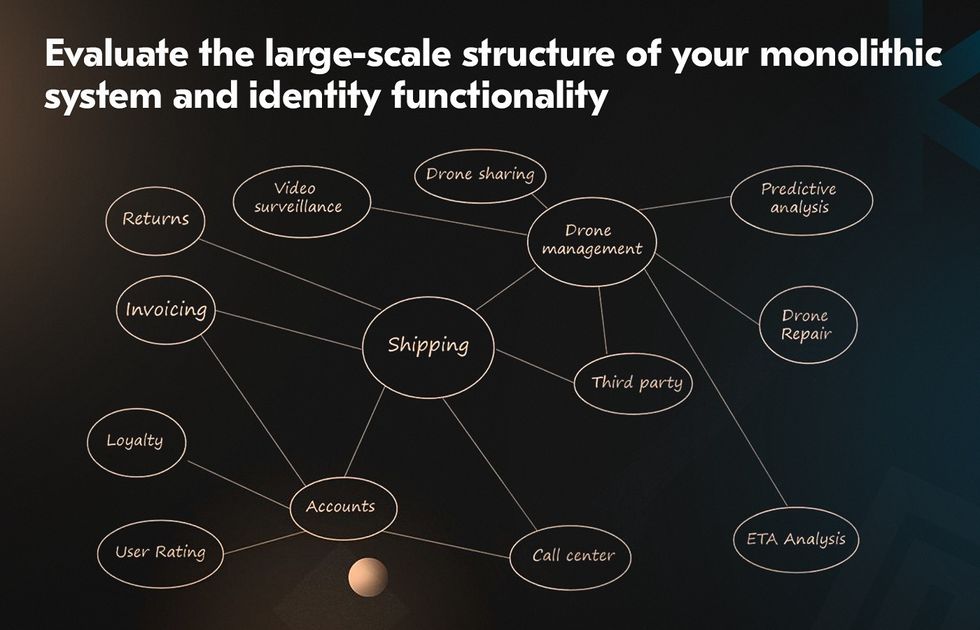
- Group functionality into bounded contexts — sets of closely related features and business functions. For example, you can put customer loyalty, user rating, and account functionality into the “account” context, while drone sharing, predictive analysis, and drone repair will become the “drone management” group.
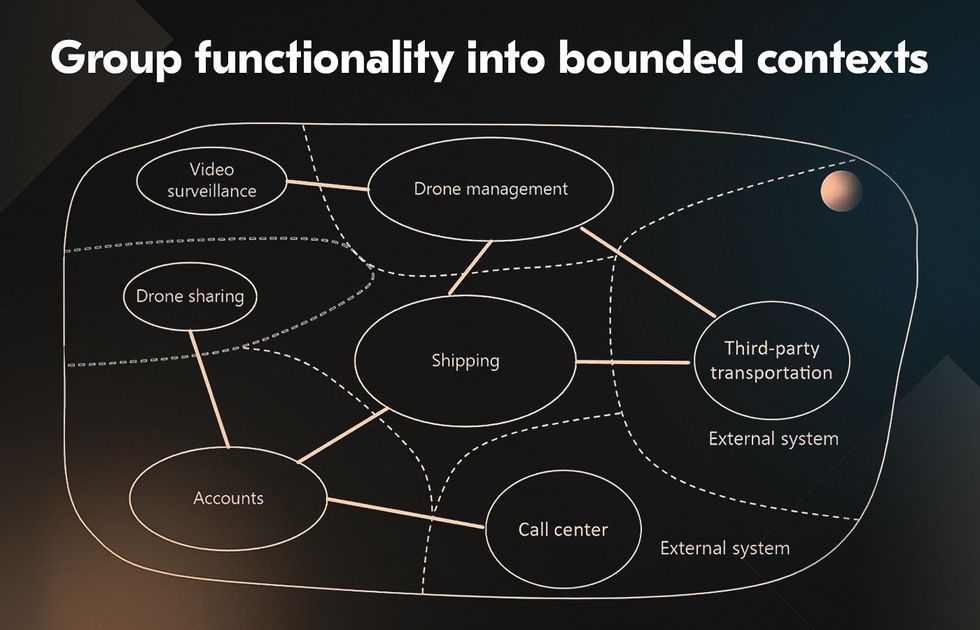
- Specify features you want to migrate and prioritize first-movers. Then, you can remove dependencies between the bounded contexts and isolate them into separate modules. Here are the two most popular approaches:
- Parallel adoption. This technique means moving functionalities to the new system without shutting down the old one. Running duplicate features in parallel helps you compare their behavior to validate that the new application works as expected.
- Phased adoption. In this approach, you move selected features to microservices and leave some functionality in the monolith system. This helps evaluate the quality of solutions and isolate errors in smaller parts of the system.
- Pick the one that suits your organization’s structure, migration scope, and business goals. In some cases, combining the approaches can yield even better results.
Microservice Migration: A Step-by-Step Guide
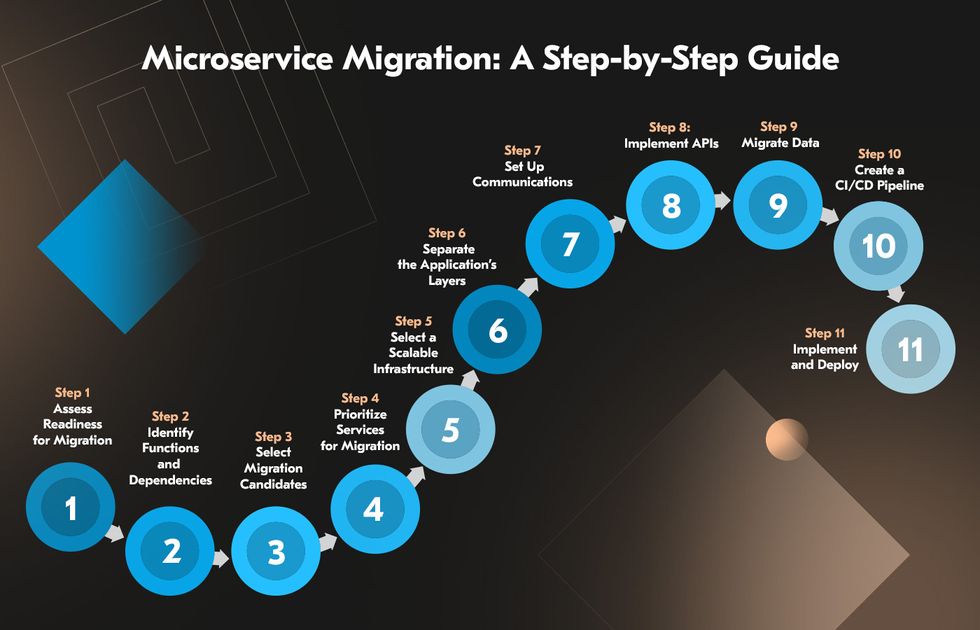
We prepared this monolithic to microservices migration strategy to help you avoid compatibility errors and performance issues (if you don’t want to use IT outsourcing).
Step 1: Assess Readiness for Migration
A successful migration requires analyzing the current infrastructure, internal policies, and team competence. Some of the points needing your attention include:
Core business priorities. Determine what you want to gain after moving to microservices. It could be rapid development, increased uptime, innovation, or scalability.
Service-level agreements. Make sure the SLAs align with various components of the deployment infrastructure. You also need to understand the SLAs of cloud providers if you wish to host the application on serverless platforms.
Team structure. Microservices require effective communications and autonomy from teams. It means you must assess the tools for collaboration and a governance model in your organization.
Infrastructure readiness. The loosely-coupled architecture allows you to shorten your release cycles to bring more value to customers. So, consider what tools and methods you use to deploy services and how you can remediate them after failed deployments.
DevOps competence. Your teams should understand the fundamental practices of DevOps and have the right tech to maximize organizational agility in microservices.
Security measures. Cybersecurity is critical for microservices architecture, and you must consider it for every isolated system. Assess your authorization and authentication measures, API gateways, communication protocols, network security protocols, and firewalls.
The assessment lets you understand what areas of your company need improvements before you can start identifying features to migrate.
Step 2: Identify Functions and Dependencies
In monolithic architectures, code often piles up, making it too complex and full of hidden dependencies. For example, code for a payment service can go to external payment providers, load irrelevant libraries, or hit retired processes.
Start by inventorying your functions and business capabilities. Each microservice must serve a specific function and have a single data repository. So, you must retire applications that duplicate each other’s functionality or provide similar data from multiple locations.
Step 3: Select Migration Candidates
Determine which bounded contexts (functional groups) provide the most value as microservices and which you should leave in the monolith system for the time being.
The developers will give you insights into the existing implementations, dependencies, and internal events. The non-technical experts will tell you about things missing in your services or features that might be critical in the future.
For example, a payment service group should include payment authorization, refund, cancellation, and status check modules. You might exclude related services with different domain areas, like order status, inventory check, and package tracking.
Step 4: Prioritize Services for Migration
You need to identify components to move first. Start with edge services — bounded contexts with fewer dependencies that are likely to be easiest to decompose into smaller services. These could include order management, invoicing, or notification features.
You might also migrate monolith to microservices to address problems like performance bottlenecks.
Step 5: Select a Scalable Infrastructure
Here, you can use certified cloud providers like Google Cloud, Microsoft Azure, and Amazon Web Services.
They let you easily scale resources for microservices and even support autoscaling. Flexible pay-as-you-go billing means you don’t pay for the resources you don’t use. You also get secure communication protocols and authorization tools to safeguard your corporate data. Additionally, the providers take care of the infrastructure maintenance for you.
Step 6: Separate the Application’s Layers
When migrating to microservices, you need to separate the presentation, business logic, and persistence (data) layers of your monolithic applications.
As you divide the layers, you’ll need to set up gateway APIs that route requests between the client and the backend. The API sets the boundaries between layers, helping your teams decouple and isolate the application. It also deals with cross-cutting tasks like SSL termination, authentication, and rate-limiting.
Step 7: Set Up Communications
Effective communication ensures exchange between different services in the loosely coupled architecture. The primary messaging patterns include synchronous communication (where the caller waits for a response) and asynchronous messaging (the service can send multiple messages simultaneously). We recommend switching to asynchronous as you move more applications to microservices.
Step 8: Implement APIs
Your team also needs to set up appropriate public APIs (for client application calls) and backend APIs (for interservice communication). API gateways act as a single entry point between clients and microservices, helping manage communication.
They handle key tasks like load balancing, security enforcement, and monitoring to keep things running smoothly and securely.
A public API should be compatible with your mobile and web applications. When selecting an API for the backend, you need to factor in latency, network performance, and payload size.
REST over HTTP/HTTPS is usually the optimal pattern for the client side. As for the server side, your options include RESTful interfaces (focused on stateless communications and scalability) and RCP interfaces (oriented towards commands and operations).
Step 9: Migrate Data
The next step includes moving legacy databases, logic, and behaviors that support the application.
Some applications will also need to access old data from your monolith (primarily in a phased adoption approach). You need to configure an API to gather information from other services. This way, the payment microservice can fetch data from the profile module in the monolith.
Step 10: Create a CI/CD Pipeline
You won’t get the most out of the new architecture without well-oiled continuous integration (CI) and continuous delivery (CD) processes. The CI allows your team to automatically test changes to always keep the code production-quality. CD tools help your teams automatically publish the code changes to the production environment.
Step 11: Implement and Deploy
Deploy the functionality gradually to ensure everything works as expected in the new architecture. Unfortunately, you might identify a significant semantic difference between the legacy system and the new one. Here’s how you can solve these problems.
Use an anti-corruption pattern (glue code) — a layer that translates communication between the existing monolith and a new system. It helps you transfer only the data required by the microservice, basically filtering unnecessary data that might pollute your system.
The canary release technique can help you reduce performance issues and errors when moving from monolith to microservices. Let’s say you migrated the application with a phased approach. First, send the traffic to the new microservice to a limited number of users (5%). If there are no errors, you can progressively increase the user count up to 100% before switching fully to a microservice.
After refactoring the application into a consistent microservice, you can remove the glue code and retire the monolith components. Then, rinse and repeat until everything finds its way to your scalable architecture.
Challenges in Migrating to Microservices
Switching to microservices comes with real challenges that affect both systems and teams. Here’s what you should know to prepare for the new chapter in your operations.
Tackle Data Management Complexity
In a monolithic setup, data is often centralized, making consistency easier to manage. But in a microservices environment, each service may manage its own database. This decentralization creates challenges in maintaining data consistency and coordinating transactions across services.
Solutions like eventual consistency, distributed transactions, and event-driven communication can help, but they add architectural complexity and require careful planning.
Prepare for Organizational Change
Migrating to microservices also impacts how people work. Teams need to move away from centralized decision-making and embrace more autonomous, cross-functional structures. Development workflows, testing strategies, and deployment pipelines must evolve. This cultural shift can be one of the hardest parts of migration, but it’s essential for fully realizing the benefits of microservices.
Expect a Steep Learning Curve
Microservices come with a new set of tools, patterns, and challenges. Teams must become familiar with containerization, orchestration tools like Kubernetes, API management, observability practices, and more. Training, mentoring, and gradual implementation can help reduce friction during this transition.
Migrating to Microservices with Acropolium
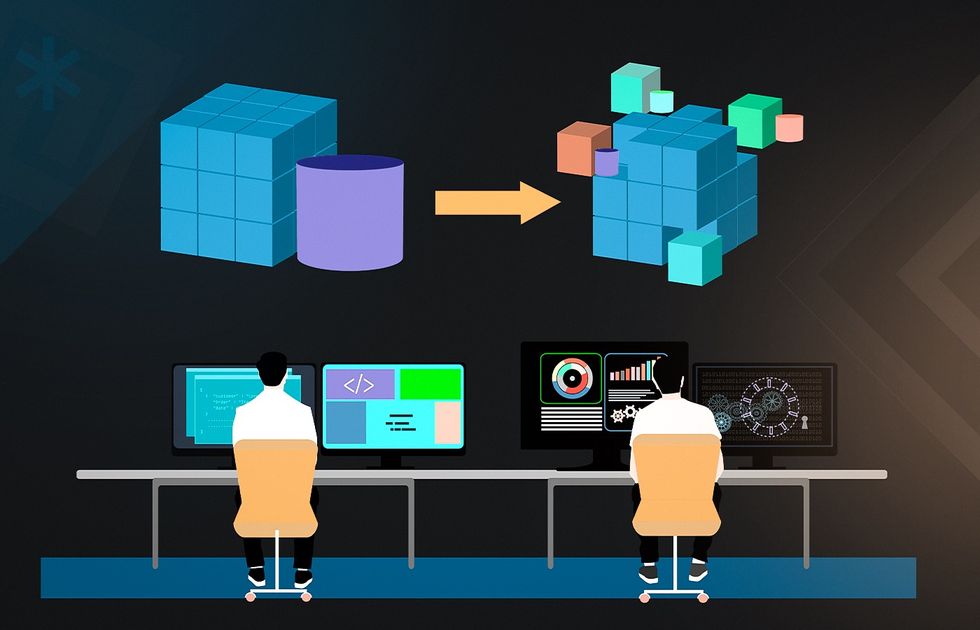
Acropolium is a software development agency that develops and modernizes systems for startups, small and medium-sized companies, and enterprises.
We implement the latest trends in microservice architecture, including serverless solutions, service mesh technologies, Kubernetes orchestration, containerization tools like Docker and CI/CD, low-code and no-code platforms, etc.
As a reliable custom software provider, we delivered over 58 system modernizations. Our dedicated team provides architecture audit, consulting, system integration, code refactoring, complete system modernization, platform migration, and performance testing services.
By upgrading your solution, you can benefit from cost reduction, enhanced agility, higher performance, and more robust security, just like our clients did:
By modernizing a TMS architecture with us, a transportation provider now saves over $5K monthly.
Having switched to microservices, our client increased their digital signage system’s uptime by 99%.
After upgrading a legacy ERP used in oil and gas operations, Acropolium’s team helped our partner increase the system’s uptime by 95% while reducing bugs by 70%.
Conclusion
Migrating from monolith to microservices is inevitable for growing companies industry-wide. The traditional monolithic architecture simply doesn’t provide the scalability, flexibility, and efficiency their teams need.
Migrating monolith to microservices challenges can be scary, especially for outdated systems and unorganized legacy code. Luckily, we at Acropolium have the expertise and over a hundred cloud migrations to assist you.
Contact us if that sounds interesting to you, so we can start talking business.









![ᐉ Banking Legacy Systems: [Modernization Strategies for the Financial Industry]](/img/articles/banking-legacy-systems/img01.jpg)




